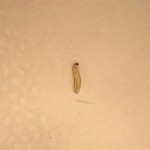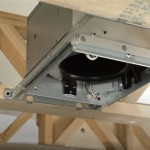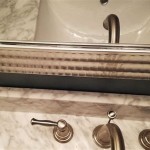What Is the Pipe Under the Bathroom Sink Called?
The pipe under the bathroom sink, often hidden from view, plays a crucial role in the plumbing system. This seemingly simple component is responsible for draining wastewater from the sink and connecting it to the main sewer line. Understanding the specific terminology and function of this pipe can be helpful for homeowners seeking to troubleshoot plumbing issues or perform basic maintenance.
Types of Pipes Under the Bathroom Sink
The pipe under the bathroom sink, commonly referred to as the "trap," comes in various forms, depending on the installation and the age of the plumbing system. These include:
- P-trap: The most common type of trap, the P-trap resembles the letter "P." It consists of a curved pipe with a water seal, which prevents sewer gases from entering the house. This trap is often the most visible pipe beneath the sink.
- S-trap: Similar to a P-trap, the S-trap features a more pronounced curve creating an "S" shape. While less common than P-traps, S-traps can be found in older homes. They are generally less efficient than P-traps, as they are more prone to clogging.
- J-trap: A J-trap, as the name suggests, is a single, curved pipe resembling the letter "J." It's often used in applications where limited space is available, such as in wall-mounted sinks.
Beyond the trap itself, other pipes are connected to the sink and drain system. These include:
- Drain pipe: The drain pipe connects the sink to the trap, channeling wastewater into the plumbing system. It is typically made of PVC or ABS plastic, although metal pipes are sometimes found in older homes.
- Vent pipe: The vent pipe is crucial for maintaining proper air circulation in the drain system. It connects to the trap and extends to the roof, allowing air to enter the drain and prevent suction that could impede water flow.
Functions of the Pipes Under the Bathroom Sink
The pipes under the bathroom sink have several crucial functions:
- Wastewater Drainage: The primary purpose of the pipes is to drain wastewater from the sink and convey it to the sewer system. The trap and drain pipe work in concert to ensure efficient and reliable waste removal.
- Sewer Gas Prevention: The trap's curved design creates a water seal, preventing sewer gases from entering the living space. This seal is crucial for maintaining healthy indoor air quality and preventing unpleasant odors.
- Air circulation: The vent pipe is essential for proper air circulation in the drain system. It allows air to enter the drain, preventing suction that could impede water flow and potentially lead to clogs.
Understanding the functions of these pipes is vital for homeowners seeking to address potential plumbing issues.
Troubleshooting and Maintenance
Common issues associated with the pipes under the bathroom sink include:
- Clogged drain: Hair, soap scum, and other debris can accumulate in the trap and drain pipe, causing slow drainage or complete blockage. Regular cleaning and unclogging are necessary to maintain proper function.
- Leaking trap: A leaking trap can indicate a damaged or cracked pipe, a loose connection, or a worn-out seal. Identifying the source of the leak is crucial for effective repairs.
- Vent pipe blockage: Obstructions in the vent pipe can restrict air circulation, leading to drainage issues and potential sewer gas backflow. Inspecting the vent pipe for blockages and ensuring proper ventilation are essential for optimal performance.
Regular maintenance of the pipes under the bathroom sink is essential for preventing plumbing problems and ensuring a smoothly functioning system. This includes:
- Periodic cleaning: Use a plunger or drain snake to remove clogs and debris from the trap and drain pipe.
- Inspecting connections: Visually inspect the pipes and connections for signs of damage or leaks. Tighten loose fittings and replace damaged components.
- Checking the vent pipe: Inspect the vent pipe for blockages and ensure it extends to the roof, providing adequate air circulation.
By understanding the functions and potential issues associated with the pipes under the bathroom sink, homeowners can proactively address problems and maintain a healthy, efficient plumbing system. This knowledge empowers them to make informed decisions about plumbing repairs and maintenance, ensuring a comfortable and functional living environment.

How To Install A Pipe From Sink Drain Wall Ehow

Bathroom Sink Plumbing Installation Diy Montreal

The P Trap That Curved Pipe Under Drain Explained

How To Fit A Bathroom Sink Diy Guides Victorian Plumbing

How To Install The P Trap Under A Sink Dummies

How To Plumb A Bathroom With Multiple Plumbing Diagrams Hammerpedia

What Does The U Shaped Pipe Under A Sink Do Wm Henderson

Learn What To Call The Parts Of Bathroom Sink Design Plumbing Decor

What Is The Bathroom Sink Plumbing Rough In Heights
How To Install Bathroom Sink Drain Queen Bee Of Honey Dos
Related Posts







